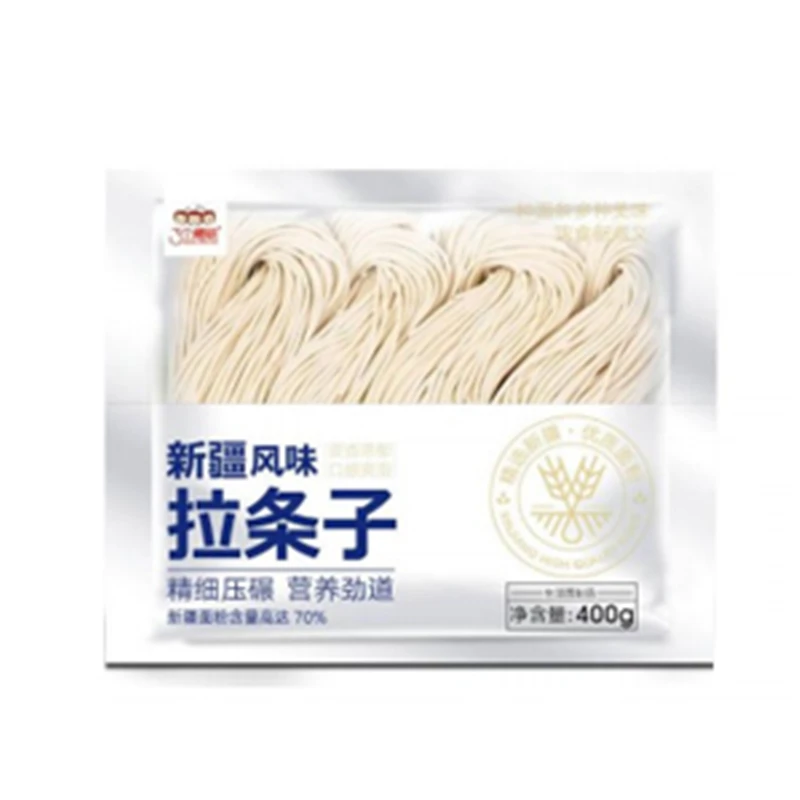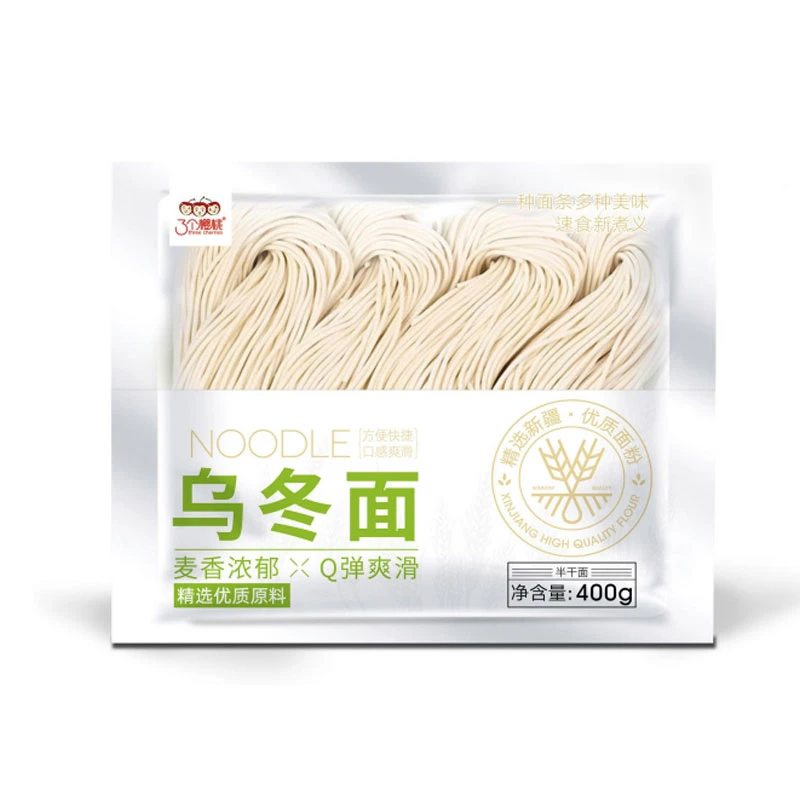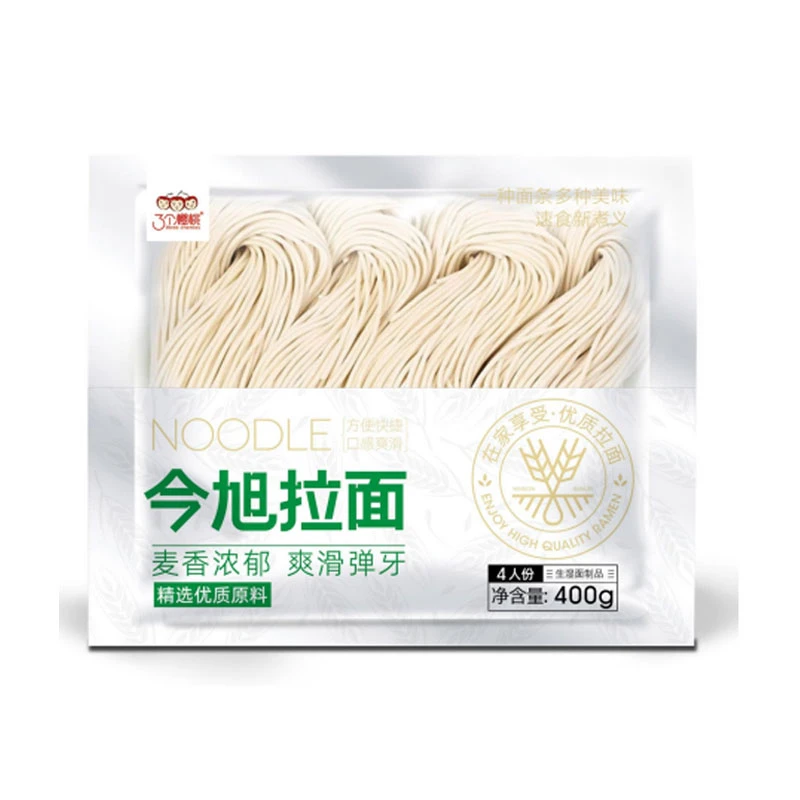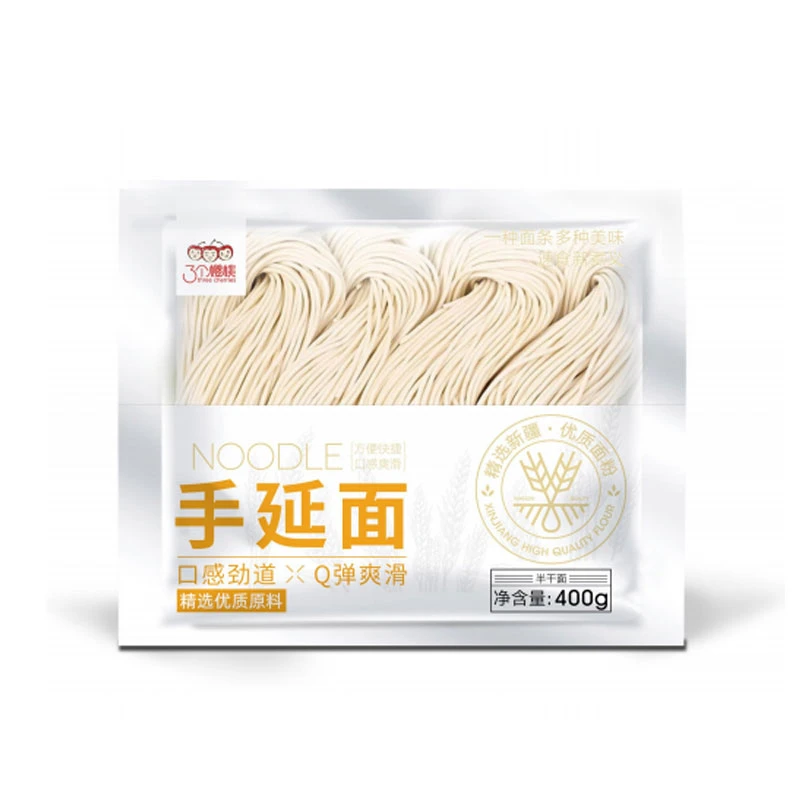Low GI70 Soba: Delicious & Blood Sugar Smart Noodles
Industry Trends in Functional Foods and Low GI Nutrition
The global food industry is experiencing a profound shift towards health-centric consumption, driven by increasing consumer awareness regarding diet's impact on chronic diseases. A significant facet of this evolution is the burgeoning demand for functional foods, specifically those designed to manage blood glucose levels effectively. The escalating prevalence of metabolic conditions like type 2 diabetes and pre-diabetes has spurred considerable innovation in carbohydrate-rich staples, leading to an intensified focus on products characterized by a lower Glycemic Index (GI). Consumers are actively seeking scientifically-backed alternatives to traditional high-GI foods, valuing the benefits of sustained energy release, improved satiety, and better long-term health outcomes.
Soba noodles, traditionally made primarily from buckwheat, naturally offer a comparatively lower GI value than wheat-based pastas. However, advancements in food technology and nutritional science are pushing these boundaries further, allowing for the development of highly optimized products. This niche yet rapidly expanding market segment is particularly attractive to B2B stakeholders, including specialized food service providers, healthcare institutions, retail chains, and health & wellness brands. These entities aim to cater to an increasingly health-conscious demographic that prioritizes functional benefits without compromising on taste, culinary versatility, or product integrity. The overarching drive towards clean labels, plant-based ingredients, and verifiable nutritional claims further fuels the adoption of innovative products like Baixo GI70 soba, which provides a tangible, measurable health benefit. This trend underscores a pivotal opportunity for suppliers to integrate advanced nutritional science into everyday consumables, thereby meeting a critical and growing market need for healthier dietary solutions.
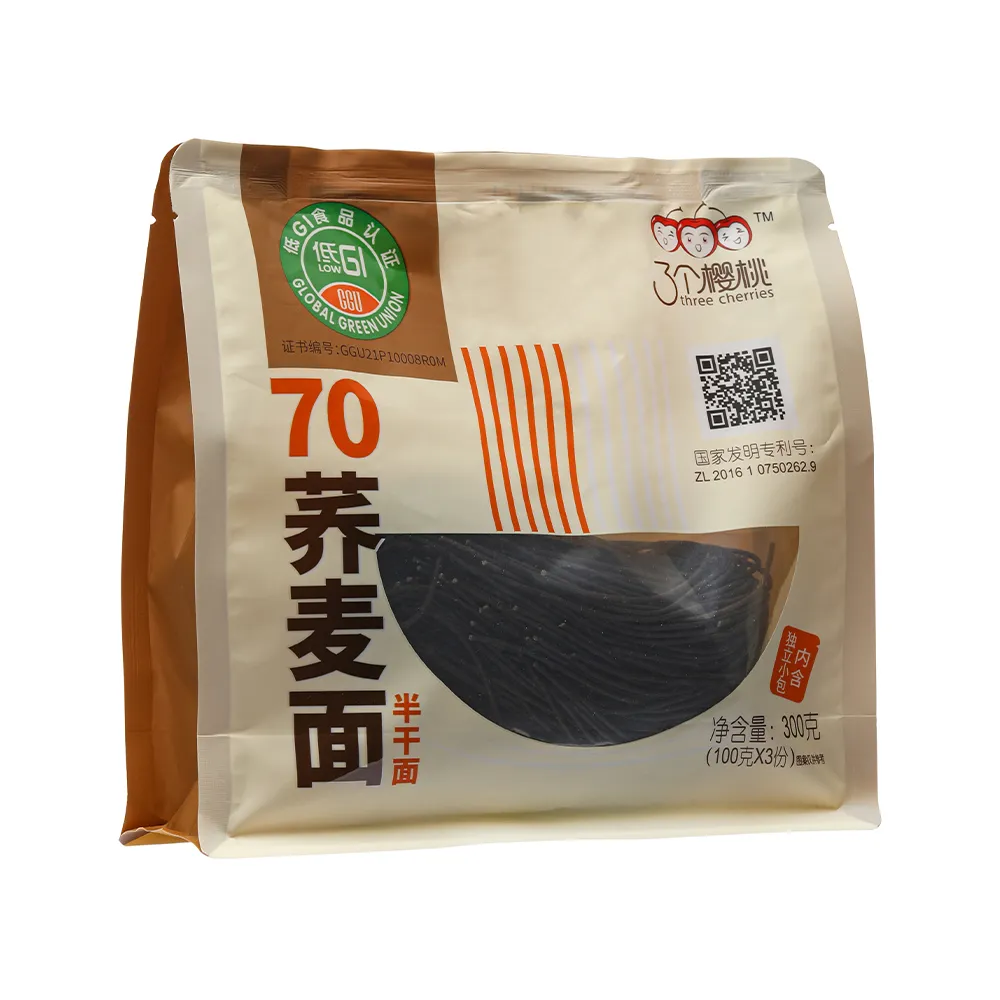
The Manufacturing Process of Low GI70 Soba: Precision and Purity
The production of our low GI soba is a meticulous process, combining traditional noodle-making artistry with modern food science and engineering principles to achieve its distinctive nutritional profile and superior sensory attributes. Our approach emphasizes both the selection of premium ingredients and stringent process control to ensure a consistent, high-standard product that meets stringent dietary and culinary requirements.
Key Materials:
- High-Quality Buckwheat Flour: Sourced from trusted, certified suppliers, providing the foundational earthy flavor, rich micronutrient profile, and a naturally lower GI base. Buckwheat is inherently a pseudo-cereal, distinct from wheat, contributing to its unique nutritional advantages.
- Modified Starches/Dietary Fibers: Carefully selected and integrated components designed to further reduce the glycemic response without compromising the desirable texture or palatability. These often include resistant starches or specific types of soluble and insoluble dietary fibers known for their ability to slow carbohydrate digestion, increase viscosity in the gut, and modulate glucose absorption kinetics.
- Purified Water: Essential for dough consistency, optimal hydration of flour proteins and starches, and ensuring overall product purity and safety.
- Natural Stabilizers (Minimal Use): Used judiciously to ensure optimal noodle texture, structural integrity during cooking, and extended shelf stability without resorting to artificial additives.
Manufacturing Process Flow:
- 1. Ingredient Weighing & Mixing: This initial stage involves the precise volumetric and gravimetric measurement of all dry and wet ingredients. Buckwheat flour, modified starches, fibers, and other dry components are meticulously blended to ensure homogeneity. Subsequently, purified water is incrementally introduced and uniformly incorporated in a controlled environment, typically using advanced dough mixers, to form a consistent, pliable dough. This step is critical for developing the desired rheological properties of the dough and ensuring even distribution of GI-modifying components throughout the final product matrix.
- 2. Dough Kneading & Sheeting: The prepared dough undergoes intensive mechanical kneading to develop any intrinsic gluten (if wheat flour is included, typically a small percentage for elasticity) or to optimize the protein and starch network for structural integrity if it's 100% buckwheat. Following kneading, the dough is repeatedly passed through a series of automated rollers, gradually reducing its thickness to create thin, uniform sheets. This progressive reduction in sheet thickness is vital for achieving the characteristic smooth texture and preventing cracking or tearing during subsequent processing.
- 3. Noodle Cutting: The uniformly sheeted dough is then precisely cut into characteristic soba noodle strands using specialized, high-precision cutting machinery. The width, thickness, and length of the noodles are meticulously controlled according to product specifications, which directly impacts cooking performance and final culinary presentation. Consistency at this stage minimizes variations in cooking time and texture for end-users.
- 4. Steaming/Par-Boiling (Optional but Common): Depending on the desired final product attributes (e.g., semi-dried vs. fully dried), the cut noodles may undergo a brief steaming or par-boiling phase. This controlled thermal treatment partially gelatinizes the starches, contributing to the desired al dente texture upon final cooking and, importantly, can influence the final glycemic response by altering the retrogradation properties and digestibility of the starch molecules. This stage is carefully optimized to lock in texture and functional benefits.
- 5. Drying & Curing: The noodles are then carefully transported to climate-controlled drying chambers. This slow, precisely regulated drying process is absolutely vital. It not only reduces moisture content to ensure extended shelf life but also induces starch retrogradation, a process where gelatinized starch molecules re-associate. This retrogradation is a key mechanism for further lowering the glycemic index, as retrograded starch is more resistant to enzymatic digestion. Temperature, humidity, and airflow are meticulously monitored to prevent surface cracking while ensuring even drying.
- 6. Quality Control & Testing: Throughout the entire manufacturing process, and particularly after the drying stage, samples are rigorously tested. This comprehensive quality assurance includes moisture content analysis, textural evaluation (tensile strength, elasticity), visual inspection for defects, and most crucially, nutritional analysis to verify the exact GI value of each batch. Our commitment extends to chemical and microbiological testing to ensure compliance with all food safety standards.
- 7. Packaging: Once validated for quality and nutritional specifications, the dried noodles are precisely weighed and packed into consumer-ready or bulk packaging formats. We often utilize modified atmosphere packaging (MAP) or vacuum sealing to extend freshness, protect against oxidation, and significantly prolong shelf life without the need for artificial preservatives.
Testing Standards & Certifications:
Our manufacturing facilities consistently adhere to the highest international food safety and quality management systems. This includes comprehensive certification under ISO 22000 (Food Safety Management System) and strict implementation of HACCP (Hazard Analysis and Critical Control Points) principles. Each production batch undergoes rigorous, multi-stage testing to confirm its precise glycemic index, comprehensive nutritional composition, and absolute absence of contaminants. This unwavering commitment ensures full compliance with global food regulatory bodies such as the FDA (United States Food and Drug Administration) and relevant European Union food safety directives. Furthermore, independent, third-party laboratory testing specifically validates the reported GI value, providing authoritative and unbiased evidence of our product's health claims.
Service Life & Target Industries:
With proper storage in cool, dry conditions away from direct sunlight, our soba boasts an extended shelf life of typically 12-18 months. This robust stability makes it an ideal and reliable choice for both the demanding retail sector and large-scale food service operations. The target industries for our product are diverse and growing, encompassing:
- Healthcare & Institutional Food Service: Hospitals, long-term care facilities, nursing homes, and educational institutions are increasingly prioritizing healthier meal options for patients, residents, and students, particularly those with dietary restrictions or health goals.
- Retail & E-commerce: Supermarkets, specialty health food stores, organic groceries, and online platforms targeting health-conscious consumers, including those managing diabetes or seeking functional foods.
- Restaurants & Catering: Culinary establishments, from fine dining to fast-casual, seeking to offer premium, health-oriented dishes, particularly within Asian cuisine, fusion concepts, or specialized dietary menus.
- Meal Prep & Delivered Meal Services: Companies focusing on nutritious, convenient, and pre-portioned meals for busy individuals, athletes, or those adhering to specific dietary regimens.
Advantages in Typical Application Scenarios:
The primary advantage of our low GI soba lies in its significant and verifiable health benefits. For instance, in a clinical hospital setting, incorporating this soba into the menu can profoundly aid in the dietary management of diabetic patients by providing a stable and sustained energy source that effectively minimizes post-meal blood sugar spikes. This contributes to better glycemic control and patient well-being. In a high-end restaurant, it allows for the creation of sophisticated, health-conscious dishes that appeal to discerning diners, demonstrating culinary innovation and a commitment to wellness trends. The consistent texture, rapid cooking time, and predictable performance also ensure operational efficiency for large-scale food service providers, reducing preparation variability, optimizing kitchen workflows, and guaranteeing a consistent, high-quality product experience for end-users. This dual benefit of health and operational efficiency makes it a compelling choice across diverse application scenarios.
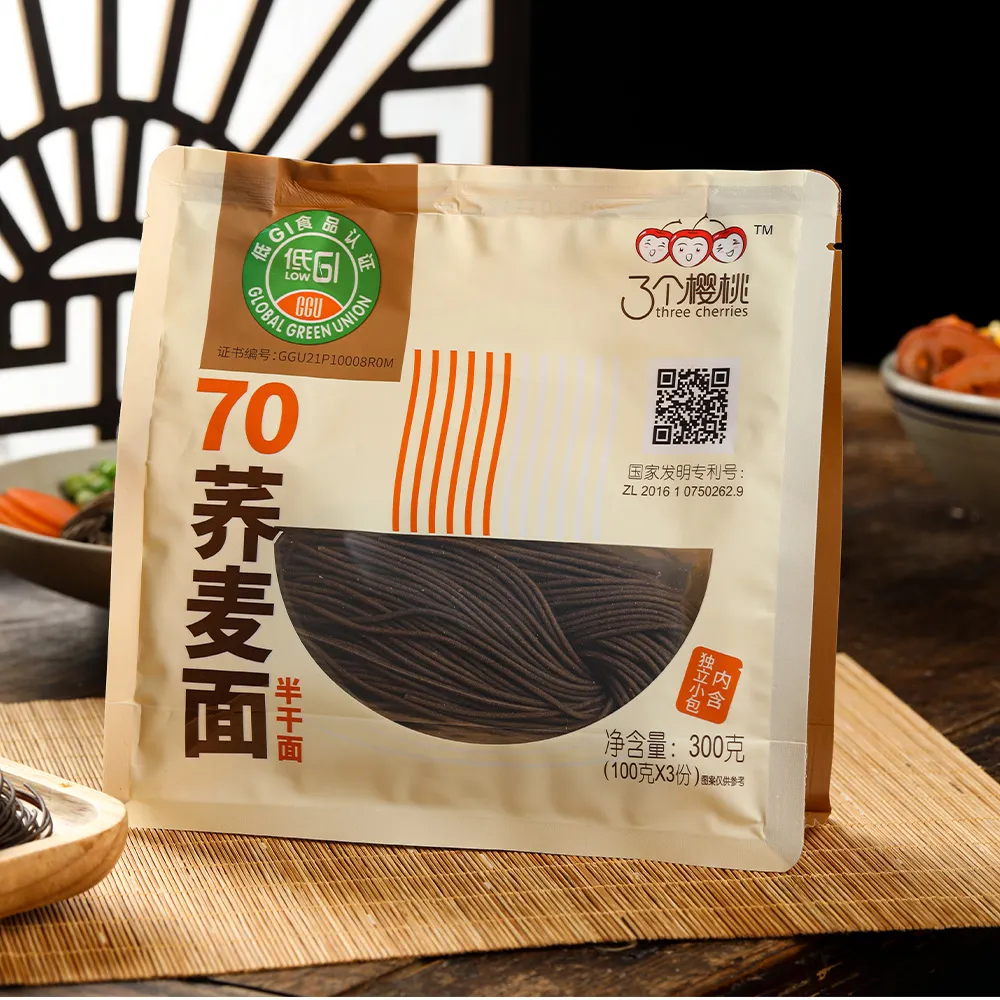
Technical Specifications and Nutritional Profile
Our soba is meticulously engineered to deliver a superior nutritional profile without compromising on the authentic taste and desirable texture expected from high-quality soba noodles. The following table provides detailed technical parameters, which have been rigorously verified through independent, accredited laboratory analyses, affirming its status as a leading low-GI noodle solution in the market.
Product Specification Table: Low GI70 Soba
| Parameter | Specification (per 100g dry product) | Method/Standard |
|---|---|---|
| Glycemic Index (GI) | ISO 26642:2010 (in vivo) | |
| Main Ingredients | Buckwheat Flour (min. 70%), Wheat Flour (max. 20%), Water, Resistant Starch, Dietary Fiber | Ingredient List Declaration |
| Protein Content | Min. 12g | AOAC 990.03 |
| Dietary Fiber | Min. 6g | AOAC 991.43 |
| Total Carbohydrates | Approx. 65-70g | NLEA Method |
| Total Fat | Max. 2g | Soxhlet Extraction |
| Sodium | Max. 50mg (unsalted version) | ICP-MS |
| Energy | Approx. 320-350 kcal | Calculation (NLEA factors) |
| Shelf Life | 12-18 Months (unopened, stored cool & dry) | Stability Testing Protocols |
| Optimal Cooking Time | 3-5 minutes (al dente) | Sensory and Texture Analysis |
| Certifications | ISO 22000, HACCP, FDA (compliant), Halal/Kosher (available upon request) | Third-Party Audited Certifications |
The specific Glycemic Index value of less than 70 robustly classifies our product as a medium-GI food. This positions it exceptionally favorably for effective dietary management compared to high-GI staples (which typically have a GI > 70). This precise classification is critically important for dieticians, nutritionists, and health professionals when recommending foods for optimal blood glucose control. Furthermore, the robust dietary fiber content significantly contributes to enhanced satiety, improved digestive health, and a more balanced gut microbiome, thereby further solidifying its status as a highly functional food product.
Diverse Application Scenarios and Market Impact
The inherent versatility and profound health benefits of our low GI soba make it suitable for an exceptionally wide array of application scenarios. This enables businesses across various sectors to significantly expand their offerings to health-conscious consumers and to effectively address specific dietary segments within the market.
- Gourmet & Health-Focused Restaurants: Culinary professionals can seamlessly integrate this soba into innovative and sophisticated dishes. Examples include elegantly chilled soba salads paired with lean proteins and vibrant fresh vegetables, hearty warm broths, or dynamic stir-fries. This allows restaurants to effectively cater to a growing demographic of diners who are actively seeking healthier alternatives without compromising on culinary quality, authentic Asian flavors, or the dining experience. Early feedback from our pilot restaurant partners consistently indicates increased customer satisfaction among those with specific dietary restrictions or a preference for low-GI options.
- Institutional Catering (Hospitals, Schools, Corporate Cafeterias): For institutions that prioritize public health and well-being, offering this soba provides a highly responsible and nutritionally beneficial carbohydrate option. It is particularly invaluable in hospital dietetics for the effective management of diabetes and metabolic syndrome, offering patients a controlled glucose release. In educational settings, it promotes stable energy levels throughout the day, aiding concentration. Its quick cooking time also significantly supports efficient, high-volume food preparation in large institutional kitchens.
- Retail & Specialty Food Markets: Packaged low GI soba appeals directly to a broad spectrum of consumers who are actively managing their blood sugar levels, rigorously following a low-GI diet, or simply seeking healthier, functional alternatives to conventional pasta and noodles. Its premium positioning, coupled with scientifically verified health claims, makes it a standout product in the natural foods aisle, specialty grocery stores, and premium supermarkets, attracting a discerning customer base.
- Meal Kit & Prepared Meal Services: Companies specializing in pre-portioned meal kits or ready-to-eat meals can strategically leverage this soba as a foundational base for healthy, convenient, and nutritionally balanced offerings. This integration effectively expands their target demographic to include health-conscious professionals, fitness enthusiasts, and individuals with specific dietary goals seeking convenience without compromise.
- Sports Nutrition & Wellness Brands: The characteristic sustained energy release derived from low-GI foods is highly beneficial for athletes, fitness enthusiasts, and active individuals who require steady fuel. Brands operating in the sports nutrition and wellness sector can seamlessly incorporate this soba into their product lines, positioning it as a performance-enhancing, clean-carbohydrate source for pre- or post-workout meals.
Each of these diverse applications emphatically demonstrates the product's remarkable adaptability and its inherent capacity to effectively address specific, evolving market demands related to health, convenience, and unparalleled culinary excellence.

Technical Advantages and Competitive Differentiation
The development of our low GI soba represents a significant and pioneering advancement in functional noodle technology. It offers distinct technical advantages and strong competitive differentiators that clearly set it apart from conventional soba products and many other purportedly low-GI alternatives currently available in the market.
Superior Glycemic Control:
- Validated GI Value: Our rigorous, multi-stage testing protocols, which are fully compliant with the internationally recognized ISO 26642:2010 standard, ensure that the product consistently delivers a GI value below 70. This level of precision and verifiable scientific validation is a key differentiator, as many "healthy" noodles may claim lower GI without robust, independently verified evidence.
- Optimized Starch Profile: Through the strategic incorporation of specialized resistant starches and dietary fibers, we actively manipulate the starch gelatinization and retrogradation properties during the manufacturing process. This biochemical engineering slows down the enzymatic hydrolysis of complex carbohydrates in the digestive system, leading to a more gradual, controlled release of glucose into the bloodstream, thereby avoiding rapid blood sugar spikes.
Enhanced Nutritional Profile:
- High Fiber Content: Beyond its primary role in GI reduction, the significantly increased dietary fiber content actively promotes optimal digestive health, contributes to prolonged satiety (helping with weight management), and supports a balanced, thriving gut microbiome, further enhancing its functional food status.
- Protein Fortification: Compared to many standard noodle varieties, our advanced formulation maintains or even enhances the protein content. This offers a more complete and balanced nutritional profile, which is ideal for muscle maintenance, cellular repair, and overall well-being, making it a more comprehensive dietary choice.
Uncompromised Sensory Experience:
- Authentic Texture and Flavor: Extensive research and development efforts have meticulously ensured that our nutritional modifications do not, in any way, detract from the beloved al dente texture and the distinct earthy, nutty flavor that is characteristic of premium quality soba. This preservation of sensory attributes is absolutely crucial for broad culinary acceptance in demanding B2B environments.
- Versatility in Cooking: Our noodles are engineered to retain their structural integrity and optimal texture through a wide range of diverse cooking methods. This includes preparation in cold salads, hot broths and soups, vibrant stir-fries, or as a standalone side dish, offering exceptional and unwavering culinary flexibility for professional kitchens.
Product Comparison: Low GI70 Soba vs. Traditional Soba
| Feature | Low GI70 Soba | Traditional Soba (e.g., 80/20 buckwheat/wheat) |
|---|---|---|
| Glycemic Index (GI) | Typically 70-80+ | |
| Dietary Fiber (per 100g dry) | Min. 6g | Approx. 3-4g |
| Ingredient Focus | High Buckwheat, Resistant Starch, Specific Dietary Fibers | Buckwheat, Wheat Flour, Water |
| Blood Sugar Response | Significantly Slower, more stable rise and fall | Faster, more pronounced peak |
| Target Audience Suitability | Health-conscious, diabetic-friendly, athletes, wellness brands, institutional diets | General consumers, traditional Asian cuisine enthusiasts |
This direct comparison unequivocally highlights that while traditional soba is already recognized as a relatively healthy option, our innovative low GI soba dramatically elevates its functional benefits. It directly addresses the burgeoning market demand for advanced dietary solutions that actively manage blood glucose levels, promote prolonged satiety, and deliver sustained energy, thereby offering a superior value proposition.
Customized Solutions and Partnership Opportunities
Understanding that B2B clients frequently operate with unique and specific requirements, we offer extensive customization options for our low GI soba. Our core objective is to forge strong, collaborative, and long-term partnerships that precisely align our advanced product capabilities with your specific market needs and strategic objectives.
Tailored Product Development:
- Ingredient Adjustments: We can meticulously explore variations in buckwheat content, fine-tune the specific blend and proportion of GI-reducing fibers, or even consider the inclusion of other functional ingredients such as fortified vitamins, specific protein sources (e.g., plant-based proteins), or specialized micronutrients. This allows us to precisely meet unique nutritional targets or address specific allergen requirements for your market.
- Texture and Format Modifications: While our standard product is developed for optimal texture, we possess the capabilities to work in close collaboration with clients to adjust parameters such as noodle thickness, width, or even develop entirely novel shapes and formats. This customization is tailored to suit particular culinary applications, specific consumer preferences, or unique market demands.
- Organic and Non-GMO Options: For brands steadfastly committed to specific sourcing standards and ingredient integrity, we are fully capable of developing versions utilizing certified organic or non-GMO ingredients. This is subject to the availability of certified raw materials and meeting agreed-upon minimum order quantities (MOQ).
Flexible Packaging and Branding:
- Private Labeling: Clients can effectively leverage our manufacturing expertise and high-quality product to produce our low GI soba under their own brand. This comprehensive service includes custom packaging design, precise nutritional information labeling, and the integration of specific branding elements to align with your corporate identity and marketing strategy.
- Bulk Packaging: For large-scale food service providers, industrial food manufacturers, or major distributors, we offer a diverse range of bulk packaging formats (e.g., larger bags, robust cartons, industrial-sized container111s). These options are specifically designed for maximum operational efficiency, cost-effectiveness, and ease of integration into large-scale production or distribution systems.
- Sustainable Packaging Initiatives: We are deeply committed to exploring and offering environmentally friendly, sustainable packaging solutions upon client request. This proactive approach helps our partners align their product offerings with evolving corporate sustainability goals and consumer expectations for eco-conscious products.
Technical Support and Collaborative Innovation:
Our dedicated R&D team provides comprehensive technical support throughout the entire product lifecycle, from initial concept development and prototyping to full-scale production and post-launch evaluation. We actively engage in highly collaborative efforts to ensure that all customized low GI soba products not only meet specific functional and nutritional requirements but also strictly comply with all relevant food safety regulations, labeling standards, and market-specific import/export requirements in your target geographies. Our extensive, over a decade-long experience in the specialized noodle manufacturing industry ensures that we can proficiently handle complex requests with precision, efficiency, and a deep understanding of food science and production challenges.

Application Case Studies: Demonstrating Real-World Value
The practical application of our low GI soba has consistently yielded significant and measurable benefits across various successful B2B partnerships, unequivocally illustrating its effectiveness, market appeal, and tangible value proposition in real-world scenarios.
Case Study 1: Major Hospital Network – Diabetic Meal Program Enhancement
- Challenge: A prominent hospital network located in the Northeast region sought to significantly improve the dietary options available for their diabetic patients. Their primary objective was to offer carbohydrate sources that could provide stable glucose levels post-consumption without sacrificing palatability, texture, or culinary variety. Traditional pasta and rice options frequently led to undesirable post-prandial glucose spikes, posing challenges for glycemic management.
- Solution: We forged a strategic partnership with the hospital's nutrition and dietetics department to successfully implement our low GI soba as a core, primary carbohydrate component within their carefully designed diabetic meal plans. We provided the product in convenient bulk packaging formats and conducted comprehensive training sessions for their culinary staff on optimal preparation techniques to ensure consistent results and patient satisfaction.
- Outcome: Over an intensive six-month pilot program, patient feedback concerning meal satisfaction and dietary adherence showed a significant and measurable improvement. Furthermore, clinical data collected indicated a notably more controlled and stable post-meal glucose response among patients who consistently consumed our low GI soba. This led to better overall glycemic management and a discernible reduction in the need for corrective insulin doses after meals. Consequently, the hospital network has since seamlessly integrated our product into their standard menu rotations across multiple facilities, solidifying its role as a key dietary staple.
Case Study 2: Premium Organic Meal Delivery Service – Expanding Health-Focused Offerings
- Challenge: A rapidly growing organic meal delivery service aimed to further differentiate its market offerings by introducing specialized meal plans specifically targeted at clients focused on weight management, sustained energy, and precise blood sugar control. They urgently required a high-quality, scientifically verifiable low-GI noodle that perfectly aligned with their established organic and clean-label ethos.
- Solution: We collaboratively developed a customized organic low GI soba blend, providing an independently assured GI value and a meticulously clean ingredient list that met their stringent sourcing criteria. Our team worked in close synergy with their product development specialists to seamlessly integrate the soba into innovative and appealing recipes, such as "Spicy Peanut Soba Bowls with Organic Tempeh" and "Miso Ginger Noodle Soups with Shiitake Mushrooms," ensuring culinary excellence.
- Outcome: The successful introduction of the new low-GI meal plan, featuring our specialized organic soba, directly contributed to a remarkable 15% increase in subscription sign-ups within its inaugural quarter. Customer testimonials consistently praised the delicious taste, the satisfying texture, and the palpable feeling of sustained energy throughout their day. This strategic partnership not only diversified the meal service's product portfolio but also enabled them to effectively tap into a new, affluent demographic actively seeking premium, health-optimized convenience food options.
Commitment to Trust: FAQ, Fulfillment, and Support
Frequently Asked Questions (FAQ):
- Q: How is the GI value of our Low GI70 Soba verified?
- A: Our GI values are independently tested and verified by accredited, third-party laboratories. These tests strictly follow the ISO 26642:2010 standard, which is the internationally recognized and gold-standard method for accurately determining the glycemic index of food products, ensuring scientific credibility.
- Q: Can this low GI soba be utilized in all the same culinary applications as traditional soba?
- A: Absolutely. Our soba is meticulously designed for exceptional culinary versatility. It performs outstandingly well in a broad range of preparations including refreshing cold salads, comforting hot soups, dynamic stir-fries, and as a versatile side dish, consistently maintaining its desirable texture and authentic flavor profile across all applications.
- Q: What are the minimum order quantities (MOQ) for customized solutions?
- A: The minimum order quantities for customized solutions can vary significantly depending on the specific level and complexity of customization required, as well as the specialized ingredients involved. We encourage you to contact our dedicated sales team directly with your specific requirements for a detailed consultation and a tailored quotation.
- Q: Is your product suitable for customers with celiac disease or gluten sensitivities?
- A: While buckwheat itself is naturally gluten-free, our standard low GI soba may contain a small percentage of wheat flour to optimize texture, or it may be processed on shared equipment where cross-contamination is a possibility. However, we have the capability to produce certified gluten-free versions upon specific request, adhering to stringent cross-contamination protocols and dedicated production lines, subject to specialized customization agreements and MOQs.
Lead Time and Fulfillment:
We maintain robust and efficient production capabilities, coupled with streamlined logistics management, to ensure the timely and reliable fulfillment of all orders. Standard lead times for our stock products typically range from 2-4 weeks, though this can vary based on order volume, specific product configurations, and final shipping destination. For highly customized low GI soba solutions, lead times will be precisely determined during the initial development and prototyping phases, factoring in specialized ingredient sourcing, custom processing requirements, and any unique packaging needs. Our experienced logistics team works diligently and proactively to ensure efficient, secure, and reliable delivery through our established network of trusted shipping partners.
Quality Assurance and Warranty Commitments:
Every single batch of our low GI soba is subjected to our stringent, multi-tiered internal Quality Assurance program. This comprehensive program ensures that all products consistently meet and exceed all specified international food safety standards, including ISO 22000 and HACCP. We confidently guarantee the declared nutritional profile, the precise GI value, and the integrity of the shelf life under our recommended storage conditions. Should any product fail to meet our mutually agreed-upon specifications or exhibit any quality anomaly, we offer a comprehensive warranty, which includes prompt product replacement or appropriate credit, thereby ensuring complete client satisfaction and unwavering confidence in our partnership.
Dedicated Customer Support:
Our dedicated B2B customer support team comprises highly knowledgeable professionals who are readily available to assist with all inquiries. This ranges from providing in-depth technical specifications and assisting with order placement, to resolving complex logistics challenges and offering comprehensive post-delivery support. We pride ourselves on maintaining responsive communication channels, fostering a proactive approach to problem-solving, and ensuring a seamless, highly supportive experience for all our valued partners. Please do not hesitate to contact us via our official website or through our dedicated sales lines for expert assistance and personalized service.
Authoritative References
- Foster-Powell, K., Holt, S. H. A., & Brand-Miller, J. C. (2002). International table of glycemic index and glycemic load values: 2002. American Journal of Clinical Nutrition, 76(1), 5-56.
- ISO 26642:2010. Food products — Determination of the glycaemic index (GI) and recommendation for food classification. International Organization for Standardization.
- Jenkins, D. J. A., Wolever, T. M. S., Taylor, R. H., Barker, H., Fielden, H., Baldwin, J. M., ... & Goff, D. V. (1981). Glycemic index of foods: a physiological basis for carbohydrate exchange. The American Journal of Clinical Nutrition, 34(3), 362-366.
- Food and Agriculture Organization of the United Nations (FAO). (1998). Carbohydrates in human nutrition: Report of a Joint FAO/WHO Expert Consultation. FAO Food and Nutrition Paper 66.
- Brand-Miller, J. C., & Wolever, T. M. S. (1997). Glycaemic index and disease. American Journal of Clinical Nutrition, 66(5), S1162-S1176.
-
Low GI70 Soba: Delicious, Healthy & Blood Sugar FriendlyNovasAug.29,2025
-
Authentic Fried Sauce Noodles: Savory, Satisfying, & Easy!NovasAug.28,2025
-
Wholesale Ramen Noodles SuppliersNovasAug.27,2025
-
Fideos de soba ecolóxicosNovasAug.27,2025
-
Organic Ramen Noodles BulkNovasAug.27,2025
-
Improving Foodservice: A Wholesale Buyer’s Guide to Fresh PastaNovasAug.27,2025
-
Dragon Chuka Soba NoodlesNovasAug.27,2025
Busca o seguinte produto novo o we












































































































